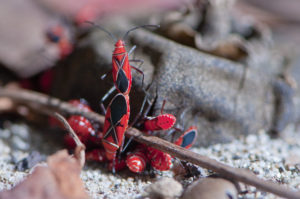SPECIES IDENTIFICATION CAVEAT
Our work, to date, has been done without capture of specimens. Identification of species on sight in the wild and even by photo imagery, can be tricky and misleading. Colors can shift according to environment, time of day, lighting, camera settings, lens and camera brand and quality, mood of animal, as well as a number of unpredictable circumstances. Images may not always capture enough identifying marks to discern similar looking species from another.
Some species are so similar in appearance that only a laboratory test can differentiate them.
We try our best to get our identifications correct, but can sometimes be wrong. If you have data sufficient to challenge our identification, we welcome seeing it. As citizen scientists, we want to get it right and appreciate any opportunity to learn … especially if it proves our original conclusions wrong!
One thing we have learned while growing up in the Virgin Islands is that animals can have different local names, distinct even among local area populations on St. Thomas alone! As we update our database, you’ll see various examples of this whether the life is on land, in the air, or under the waters. Sometimes multiple species get lumped as one animal in local naming convention.  Any soaring bird-of-prey gives way to the name Chicken Hawk (Red-tailed Hawk) no matter if it is an Osprey (fish eagle), Falcon, or Kestrel. Our sometime use of traditional local naming conventions can be viewed as a cultural or sociological insight into resident understanding of the Eco-system.
Any soaring bird-of-prey gives way to the name Chicken Hawk (Red-tailed Hawk) no matter if it is an Osprey (fish eagle), Falcon, or Kestrel. Our sometime use of traditional local naming conventions can be viewed as a cultural or sociological insight into resident understanding of the Eco-system.
We also browse a number of purchased and on-line reference sources to assist in identifying wildlife. Alas, for any given species there is never 100% alignment of data, observations, conclusions and sometimes even identification. In too many cases references are merely scientifically descriptive, lacking either drawings or photos of the species.
We have found the situation on the internet to be even more confounding as many are posting what they believe an animal is, disrupting any accurate search for species outside of the drudgery of academia.

